by Julie McConnell | Nov 18, 2013
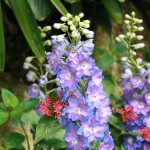
Delphiniums
As the weather changes, so should your flower bed. Annual flowers provide fantastic color to landscapes with months of flowers or attractive foliage, but the trade-off is that they give you all they’ve got over one growing season.
There are two main groups of annuals, summer (warm season) and winter (cool season). Summer annuals are considered “tender” and will not tolerate frosts, but winter annuals are “hardy” meaning they can stand cool temperatures and even hard frost if given time to establish before the coldest weather arrives. Most winter annuals actually prefer cooler temperatures and perform poorly during the hottest part of the year.
Some hardy winter annuals that can be planted after October are pansies, violas, snapdragons, dianthus,delphinium, petunia, alyssum, dusty miller, hollyhock, ornamental cabbage and kale, and verbena. With all the choices available, winter flower beds can be filled with all ranges of the color palate!
Plan to change flower beds to winter annuals from October to November, depending on the weather. Wait until cool weather trends arrive so that the new plants are not stressed by hot weather and high humidity. Most winter annuals will perform well until warm weather arrives, typically April or May in North Florida. Read more about “Gardening with Annuals in Florida.”
by Sheila Dunning | Nov 11, 2013

It doesn’t take expert gardeners or landscapers to create a Florida-friendly yard. All it takes is a willingness to learn and a desire to build a beautiful yard that helps protect Florida’s environment. Florida-friendly landscaping is now part of state law. Florida Statute 373.185 prohibits government entities and homeowners associations from enacting or enforcing any governing document to prevent homeowners from implementing Florida-friendly landscaping (FFL) principles. A guideline to ease the development of a manual can be found at this link on the Florida Yards and Neighborhoods website. “Florida-Friendly Landscape Guidance Models for Ordinances, Covenants, and Restrictions.” 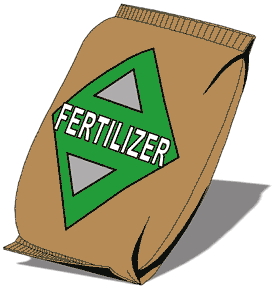 Florida Statutes 482.1562 states that all commercial fertilizer applicators must have a license from the Florida Department of Agriculture and Consumer Services (FDACS) by January 1, 2014. To get this license, each Green Industry employee must be trained in Best Management Practices, which teaches professionals how to implement FFL principles. Additionally, to address water conservation Florida Statute 373.62 says the following: “Any person who operates an automatic landscape irrigation system shall properly install, maintain, and operate technology that inhibits or interrupts operation of the system during periods of sufficient moisture, regardless of when the system was installed”. Irrigation contractors are required by law to ensure that there is an operational rain shut off device on site before they can perform any services. If it doesn’t exist or isn’t working, the contractor can be fined for not reporting the property owner or by completing the repair work without installing or repairing the rain shut off device.
Florida Statutes 482.1562 states that all commercial fertilizer applicators must have a license from the Florida Department of Agriculture and Consumer Services (FDACS) by January 1, 2014. To get this license, each Green Industry employee must be trained in Best Management Practices, which teaches professionals how to implement FFL principles. Additionally, to address water conservation Florida Statute 373.62 says the following: “Any person who operates an automatic landscape irrigation system shall properly install, maintain, and operate technology that inhibits or interrupts operation of the system during periods of sufficient moisture, regardless of when the system was installed”. Irrigation contractors are required by law to ensure that there is an operational rain shut off device on site before they can perform any services. If it doesn’t exist or isn’t working, the contractor can be fined for not reporting the property owner or by completing the repair work without installing or repairing the rain shut off device.
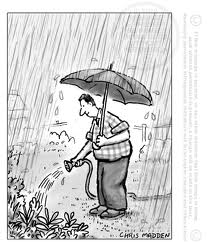 Fertilizing Appropriately and Watering Efficiently are just two of the nine Florida-friendly landscaping principles. Right Plant, Right Place; Mulch, Attracting Wildlife, Managing Yard Pests Responsibly, Recycling, Reducing Stormwater Runoff and Protecting the Waterfront.are the other principles. Utilizing landscape techniques that reduce the inputs that can negatively impact natural resources is the foundation of Florida-friendly landscaping. By implementing the practices, the user saves money, reduces their workload and protects the environment. Many of the Florida-friendly landscaping principles are common sense applications. For more information visit the Florida Yards website.
Fertilizing Appropriately and Watering Efficiently are just two of the nine Florida-friendly landscaping principles. Right Plant, Right Place; Mulch, Attracting Wildlife, Managing Yard Pests Responsibly, Recycling, Reducing Stormwater Runoff and Protecting the Waterfront.are the other principles. Utilizing landscape techniques that reduce the inputs that can negatively impact natural resources is the foundation of Florida-friendly landscaping. By implementing the practices, the user saves money, reduces their workload and protects the environment. Many of the Florida-friendly landscaping principles are common sense applications. For more information visit the Florida Yards website.
by Alex Bolques | Oct 25, 2013
 The avid gardener has heard on many occasions that fall is the best time of the year to plant trees and shrubs. Correct! Now is the time to start a fruit orchard or an edible landscape. As the seasons transition into much cooler weather, now is the ideal planting season for hardy trees, shrubs and ground covers (Trawick, 2013).
The avid gardener has heard on many occasions that fall is the best time of the year to plant trees and shrubs. Correct! Now is the time to start a fruit orchard or an edible landscape. As the seasons transition into much cooler weather, now is the ideal planting season for hardy trees, shrubs and ground covers (Trawick, 2013).
In the fall, plants require less water to get established and stress factors associated with planting in full sun are reduced. Although weather is cool, soil temperatures continue to be warm enough throughout the season to promote root growth. Thus by planting in the fall, the plant becomes more established by having a better and more vigorous root system than a plant that is planted at springtime.
Deciding what to grow sometimes is limited by what is available in a given area. Mail and online sales can be tricky if for those unaware about which fruit species perofrms best in Northwest Florida. To aid in this planning process, a link to a University of Florida IFAS publication (HS1218) is included that contains a directory of certified Florida nurseries offering fruit and nut crops. While it was developed to assist farmers locate fruit and nuts cultivars in Florida, it is helpful to begin thinking about what to grow and where to find it. The publication also lists recommended fruit and nut species and cultivars for North Florida, including north-central Florida.
Fruitscapes is a University of Florida website dedicated to fruit trees in Florida, which will increase understanding of fruit tree cultural and pest management requirements for all readers. Also explore “Temperate Fruit Crops” . Bookmark this webpage and refer to it as needed. Also, consult with your county extension office in your area.
by Blake Thaxton | Sep 23, 2013
It has been a hot summer but Fall is right around the corner. Cooler temperatures and changing colors are a welcomed change in the panhandle of Florida. Fall can be a great time to spruce up your landscape with some new shrubs.
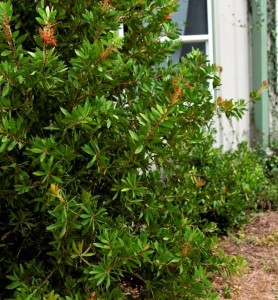
Image Credit UF / IFAS
It may be time for your landscape to receive a mini-makeover and to get a new look for fall and years to come. Perhaps some shrubs strategically placed will be what makes your outdoor living space pop. Proper selection and installation is key to health of the shrub moving forward.
Selection
There are several factors that need to be taken into account before buying shrubs to add to your landscape. Carefully selecting plants based on the following points will help with long term success of the plant:
- Climate – Be sure that the species will tolerate the climate you live in.
- Environment – Study the light level, acidity, and drainage of the planting site.
- Space – Account for the mature size of the plant before planting. This will keep you from having to remove the plant if the space is not adequate.
- Inspect the plant – Check for mechanical injury (scars and open wounds), cold injury, condition and shape of the canopy, and examine the root system.
Installation
Now that the proper plant has been selected it is time to give the shrub the best chance for survival with proper installation techniques. Fall and winter is an ideal time for planting shrubs. The roots can develop before the tops begin to grow in spring. The following are the keys to proper establishment of container shrubs.
- Root ball preparation – Remove the container from the root ball and inspect for circling roots. If there are circling roots than make three or four cuts vertically to cut the roots. Pull some of the roots away so they will take on a new growth direction (massage the roots). Also find the top most roots as sometimes they are covered by extra potting media. Remove the extra potting media so the top most roots are exposed and become the top of the root ball.
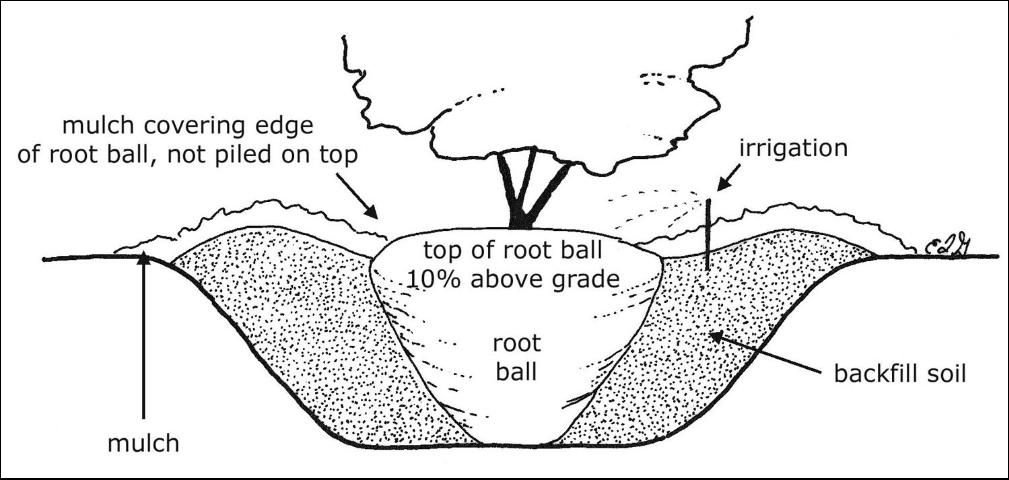
Image Credits: UF/IFAS, Edward F. Gilman
- Wider is better – Dig the hole two or three times the diameter of the root ball.
- Proper depth – Make sure to dig the hole 10% less than the height of the root ball. In poorly drained soils dig the hole 25% less than the the height of the root ball. The top most roots should be slightly above the native soils.
- Backfill – Fill the hole with existing soil half way and tamp the soil to settle. Again fill the rest of the hole with the existing soil and tamp again to settle the soil. Do not place any backfill soil or mulch over the root ball as it is crucial that water and air are able to be in contact with the the roots.
- Aftercare – Irrigate daily for the first two weeks, followed by every other day for the next two months, and weekly until the shrub is established (For <2 inch caliper shrubs).
If these key points are followed regarding selection and installation, the shrubs will be well on their way to becoming established in the landscape. If you would like read more in detail about installation please read the following:
Specifications for Planting Trees and Shrubs in the Southeastern U.S.
Literature:
Gilman, E.F., (2011, August) Specifications for Planting Trees and Shrubs in the Southeastern U.S.. Retrieved from: http://edis.ifas.ufl.edu/ep112
Black, R.J. and Ruppert, K.C., (1998) Your Florida Landscape, A complete guide to planting & maintenance. Gainesville, FL: University Press of Florida.







